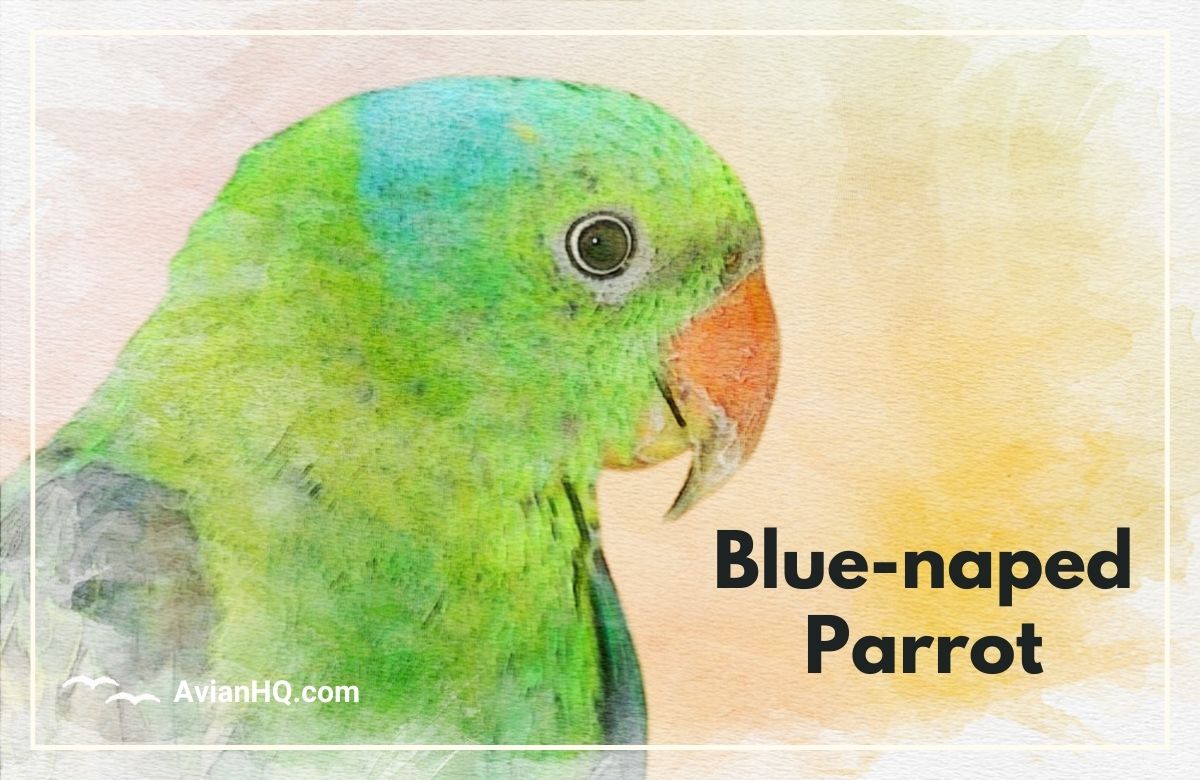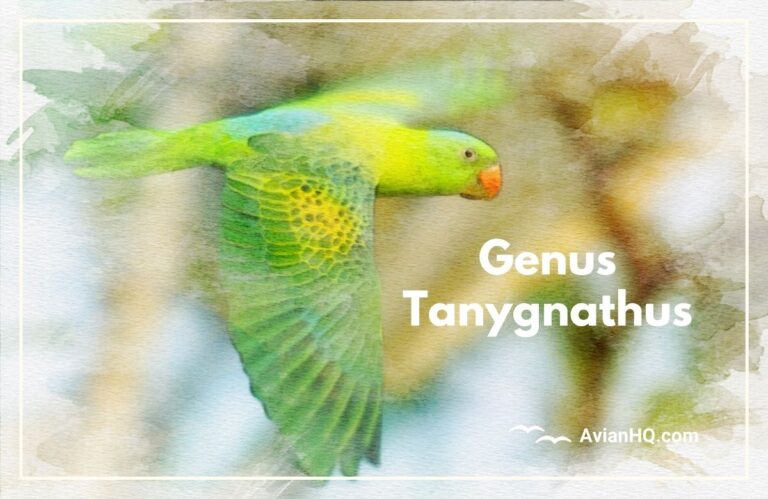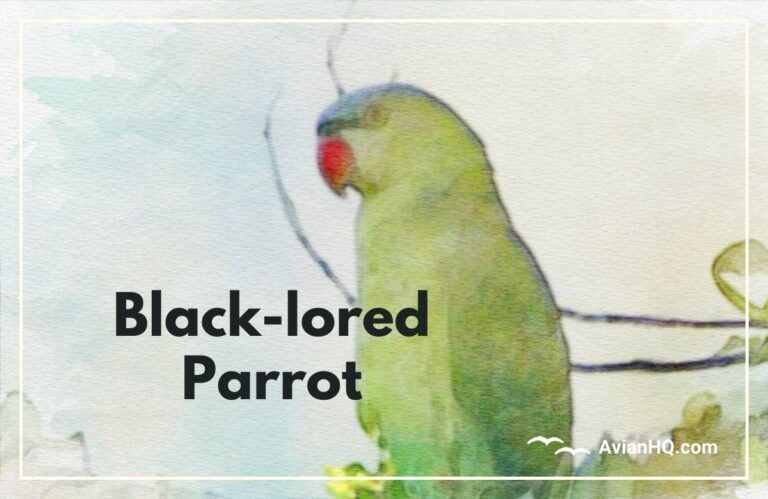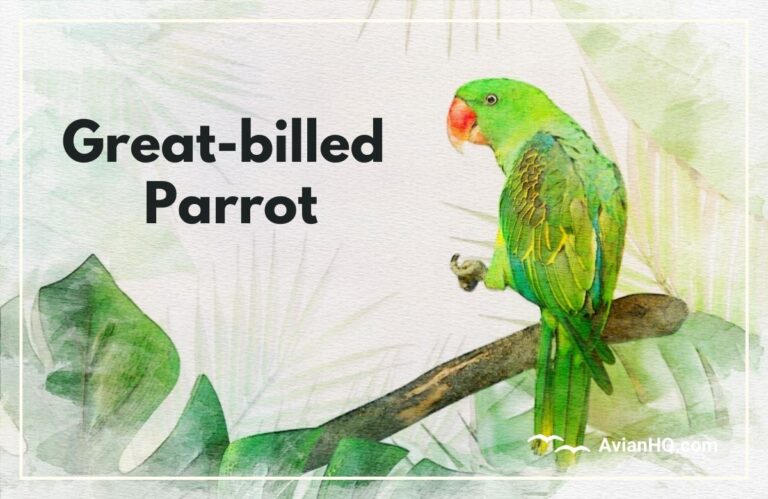Blue-naped Parrot (Tanygnathus lucionensis)
You’ve probably seen vibrant green parrots with striking blue crowns perched in trees or flying overhead if you’ve visited the Philippines. These charming birds are known as Blue-naped Parrots (Tanygnathus lucionensis), and they are endemic to this island nation. With their bright plumage and raspy calls, Blue-naped Parrots add beauty and character to their forest habitat.
Blue-naped Parrots go by many other common names, including Blue-crowned Green Parrots, Luzon Parrots, and Philippine Green Parrots. But no matter what you call them, these parrots are a treasured part of the avifauna of the Philippines. Their conservation is important to preserve both the biodiversity of the islands and a symbol of national pride.
“The blue-naped parrot is considered by many to be a national treasure of the Philippines.”
In this article, we will explore the natural history of the Blue-naped Parrot, including it’s taxonomy, physical appearance, habitat requirements, diet, ecology, reproduction, and current conservation status. We’ll also touch on some interesting facts about it’s history and significance to Philippine culture over the centuries. Whether you’re a bird enthusiast, world traveler, or armchair naturalist, learning more about this vivid island parrot is a rewarding experience.
History and Taxonomy
The Blue-naped Parrot was first scientifically described in 1760 by French zoologist Mathurin Jacques Brisson. His description was based on a specimen collected from Luzon Island in the Philippines.
Brisson gave it the scientific name Psittacus lucionensis, with the specific epithet referring to Luzon. Though Brisson named the species, his taxonomies are not officially recognized.
In 1766, Carl Linnaeus gave the Blue-naped Parrot it’s current official binomial name Tanygnathus lucionensis in the 12th edition of his Systema Naturae.
The genus name Tanygnathus is derived from the Greek words “tanygnathos” meaning “long jaws.” This refers to the parrot’s large powerful beak.
Three subspecies of the Blue-naped Parrot are recognized:
- T. l. lucionensis – Native to Luzon and Mindoro islands
- T. l. hybridus – Found only on Polillo Islands
- T. l. talautensis – Ranges across central/south Philippines and Talaud Islands
The subspecies differ slightly in the extent of blue plumage on the crown, nape, and back. But all share the core green and blue coloration of this stunning endemic parrot.
Physical Appearance
The Blue-naped Parrot is a medium-sized parrot, measuring about 12 inches or 31 cm in total length. Their average weight ranges between 7-8 ounces or 200-230 grams.
These parrots have vivid green plumage covering most of their body, wings, and tail. As their name suggests, adult birds have a distinctive light blue patch on the crown and nape (back) of the neck. The lower back and rump are also pale blue.
Other distinctive markings include scalloped black shoulders with orange-brown edges on the wing coverts. The underwings are blackish in color with some green underwing coverts.
There are three recognized subspecies of the Blue-naped Parrot:
- T. l. lucionensis – Found on Luzon and Mindoro islands. Most extensive blue on crown and nape.
- T. l. hybridus – Native to Polillo Islands. Blue crown tinged violet, more green on wings.
- T. l. talautensis – Ranges across central/south Philippines. No blue on lower back.
The eyes are yellow in adults and grey in juveniles. The bill is a bright red-orange that emerges even in nestlings before they are fully feathered.
Habitat and Distribution
The Blue-naped Parrot is endemic to the Philippines, found throughout the islands of Luzon, Mindoro, Mindanao, and others. It has also been introduced to some islands off the coast of Sabah, Malaysia.
This species inhabits secondary forest areas, forest edges, coconut groves, and wooded cultivated areas. It’s elevation range extends up to about 3,300 feet or 1,000 meters.
The different subspecies have the following distribution:
- T. l. lucionensis – Native to Luzon and Mindoro islands.
- T. l. hybridus – Only found on Polillo Islands.
- T. l. talautensis – Ranges across the central and southern Philippines. Also occurs on the Talaud Islands, Indonesia.
Within it’s forest habitat, Blue-naped Parrots often forage at the forest edges and open areas. They roost in the upper canopy of tall trees.
Diet and Feeding
The diet of Blue-naped Parrots consists mainly of fruits, seeds, nuts, and grains. Their preferred foods in the wild include:
- Berries and fruits – figs, mangoes, bananas, papaya
- Palm fruits and young coconuts
- Seeds of native trees and shrubs
- Grains like corn, oats, and rice
These parrots use their strong curved beaks to crack into seeds and nuts. They may also dig into unripe fruits.
Blue-naped Parrots forage for food in small flocks of up to 12 birds. They make daily movements between roosting sites and feeding areas at dawn and dusk.
In captivity, their diet can be supplemented with:
- Chopped fruits and vegetables – apple, pear, carrot, sweet potato
- Sprouted beans, lentils, or other seeds
- Shelled nuts like pecans, walnuts, hazelnuts
- Cooked brown rice, quinoa, pasta
- Pellets and seed mixes
A varied diet supports good health and nutrition in captive Blue-naped Parrots. Fresh water should be available at all times.
Breeding and Reproduction
In the wild, the breeding season for Blue-naped Parrots lasts from April through June. They nest in natural tree cavities, choosing holes with entrances around 4 inches or 10 cm wide.
The average clutch size is 2-3 eggs. The eggs are broad and elliptical, roughly 1.5 x 1 inches or 38.5 x 27 mm in size.
Only the female incubates the eggs. The incubation period lasts around 25 days. Once hatched, the chicks are fed and cared for by both parents.
The chicks fledge at around 9 weeks of age. Their hatching weight is about 0.35 ounces or 10 grams. The fledging weight is not well documented.
In captivity, Blue-naped Parrots can be encouraged to breed by providing a nest box approximately 10 x 10 x 22 inches (25 x 25 x 56 cm). The inside can be lined with soft wood shavings or a layer of aspen chips. Providing natural branches and a cuttlebone encourages beak conditioning and nesting behaviors. A breeding diet with added calcium is also recommended.
Behavior and Ecology
Blue-naped Parrots are highly social birds that live in flocks year-round. Their flock sizes are usually less than 12 individuals. Flocks may include pair bonds and family groups.
These parrots are active from dawn to dusk each day. In the morning they leave their roosting sites to forage and feed. At dusk they return to roost communally in tall trees.
Their flight is swift and direct. Their calls are loud, harsh, and raspy, described as “screeching” by some observers.
Blue-naped Parrots may associate with other parrot species while foraging. Groups are sometimes seen feeding alongside Golden-mantled Racquet-tails.
Within flocks there are complex social dynamics. Pairs preen each other frequently as bonding behaviors. Dominance hierarchies determine access to food sources and nesting sites.
Roosting flocks help provide safety through group vigilance. Flocks take flight rapidly and loudly when disturbed or alarmed.
Overall, the flocking behavior and vocalizations of Blue-naped Parrots support social bonding, territoriality, and predator detection. Their social nature is a key aspect of their ecology.
Conservation Status
The Blue-naped Parrot is classified as Near Threatened on the IUCN Red List of Threatened Species. Though still relatively widespread, it’s population is decreasing.
Current estimates put the global population at 2,500-10,000 mature individuals. However, their numbers have declined up to 30% over the last several decades.
The major threats facing Blue-naped Parrots are:
- Habitat loss due to deforestation
- Capture for the pet trade
- Competition for nest sites
They are now rare and localized on many Philippine islands. The exceptions are Mindoro and Palawan, where healthy populations remain.
Blue-naped Parrots are listed on Appendix II of CITES, which regulates their trade. They are also protected under Philippine law, which prohibits their capture, sale, or export.
Conservation actions needed include protecting remaining forest habitats and limiting the trapping of wild parrots for the pet trade. Ecotourism and education programs can also help promote the value of these birds to the public. With appropriate conservation measures, the unique Blue-naped Parrot can thrive well into the future.
Cultural Significance
The Blue-naped Parrot holds a special place in the culture and psyche of the Philippines. This colorful endemic bird is seen as a national treasure.
Images of the Blue-naped Parrot are sometimes used in Philippine art, handicrafts, advertising, and graphic design. It often appears on tourist souvenirs.
Colloquially known as “pikoy,” the Blue-naped Parrot remains an iconic and quintessentially Philippine bird. It’s persistence in the wild symbolizes the richness of the country’s natural heritage.
Conserving this charismatic parrot is important not just for ecological reasons, but also to preserve part of the cultural fabric of the Philippines. Protecting the species demonstrates national pride and honors this unique island biodiversity.
Conclusion
The Blue-naped Parrot is a vibrant tropical parrot endemic to the Philippine archipelago. With it’s bright green and blue plumage, it stands out in it’s forest habitat.
This medium-sized parrot measures about 12 inches (31 cm) long and weighs 7-8 ounces (200-230 g). It’s diet consists of fruits, seeds, nuts and grains foraged in the forest canopy.
Blue-naped Parrots breed during the summer months, nesting in tree cavities. Though still relatively widespread, habitat loss and trapping have led to population declines.
Three subspecies are recognized, with variations in the extent of blue plumage and geographic ranges. The Talaud Islands subspecies T. l. talautensis is the most threatened.
Conservation efforts are needed to protect remaining forest habitat and limit poaching. This endemic parrot is ingrained in Philippine culture and deserves a secure future.
The Blue-naped Parrot highlights the unique biodiversity of these islands. Learning about this charismatic species provides insights into the ecology of Southeast Asia and beyond.





